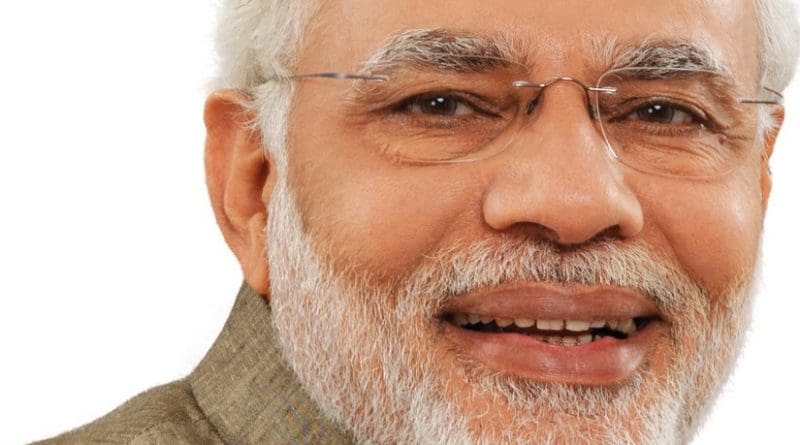Modi Needed To Show ‘Action’, But What Will Be Reaction? – OpEd
By Tarun Basu*
Indian Prime Minister Narendra Modi had to show to the people of India that he could live up to his braggadocio – and he did so when he authorised Thursday’s “surgical strikes” across the Line of Control (LoC) in Pakistan territory to take out seven terrorist “launch pads” and causing what officials are calling “significant casualties”.
What the consequences of this action will be remains to be seen.
Right throughout his election campaign, Modi had mocked his predecessor Manmohan Singh for letting Pakistani transgressions go unanswered, and had said if he came to power, he would throw protocol to the winds and “teach Pakistan a lesson” that it would not forget. In heated campaign rhetoric he had bragged about his “56-inch chest” that any putative enemy needed to fear while his party colleagues, now ministers and senior functionaries in the government, had called for 10 Pakistani heads when one Indian Army soldier was found beheaded on the border.
Amit Shah, Modi’s closest aide and the president of the ruling Bharatiya Janata Party (BJP), had even grandly announced that “not a rat would be allowed to cross the LoC if Modi becomes PM”. And since not just one rat but, in Indian eyes, any number of Pakistan and Pakistan-supported “vermin” had been repeatedly transgressing the LoC, killing Indian armed forces personnel and generally cocking a snook at the government and security establishment, Modi could not but respond in kind – and announce it to the world.
Although the Modi government has been discussing various “options” that India can take in terms of a “befitting reply” to Pakistan, with senior and influential ruling party leaders even calling “for one tooth, the complete jaw”, Modi knew also that an inflamed Indian public would not be appeased, particularly hardline elements in his own rightist party and its ideological affiliates, unless the government was able to show some kind of muscular, retaliatory action in addition to any other diplomatic or economic measures it may take. Thursday’s dramatic announcement of “surgical strikes” should be seen in that context.
Indian Army Thursday held a rare press conference, in the company of Ministry of External Affairs officials, to announce it had conducted surgical strikes across the LoC – the de facto ceasefire line in Kashmir between India and Pakistan – in which they neutralised launch pads of Pakistan-based terrorists who were, according to intelligence reports, planning a strike on Indian soil.
This action gives a new dimension to the political and military tensions between India and Pakistan, although Lt Gen Ranbir Singh, India’s Director General of Military Operations (DGMO), said the operation had stopped as its objective had been reached. He also said he had called up his Pakistani counterpart to inform him of the Indian action, which meant that the hotline between the two armies was operational to ensure that the cross-borders tensions did not go out of control.
Modi on Thursday morning chaired a meeting of the Cabinet Committee on Security (CCS) where he was briefed on the Indian operation and the decision taken to go public with it — the much-awaited “fitting response” to the Pakistani aggression that had killed 18 Indian Army soldiers, an action which Islamabad not only denied but claimed had been “staged” by India.
Will this lead to a dangerous escalation in South Asia, a fraught region marked by the least level of regional cooperation among its countries? There is no doubt that the rest of the world is extremely worried about what is happening between the two nuclear-armed neighbours with many wondering if the region is teetering on the brink of what many in the West had described as a “nuclear flashpoint”.
India said its action had caused “significant casualties” though there was no word on whether the Indian side had suffered any casualties in the operation. The India Army statement justified it by saying, “Despite persistent urges to Pakistan to not allow territory under its control to not be used for terrorist activities nothing was done.” Usually, when such actions are secretly undertaken, these are done without public announcements to ensure that they have what in strategic vocabulary is called the “deniability factor”.
Pakistani Army has flatly denied the Indian “surgical strikes”, insisting that what had occurred was a ceasefire violation of cross-LoC firing in which two Pakistan army personnel were killed, adding that, “Pakistani troops befittingly responded to Indian unprovoked firing on the LoC in Bhimber, Hotspring Kel and Lipa sectors (of Jammu and Kashmir).”
There is no doubt that Pakistan is going to weigh the actions it needs to take to publicly appease its own population. Islamabad has disowned the Uri strike, but now that India has gone ahead with announcing today’s cross-border action it has to also show to its public that it cannot be taken for granted. Pakistan Prime Minister Nawaz Sharif responded with alacrity to the Indian announcement to say: “Our desire for peace should not be seen as a sign of weakness.”
*Tarun Basu is President, Society for Policy Studies (SPS). Comments and suggestions on this article can be sent on: [email protected]

